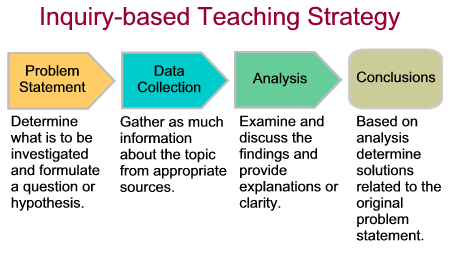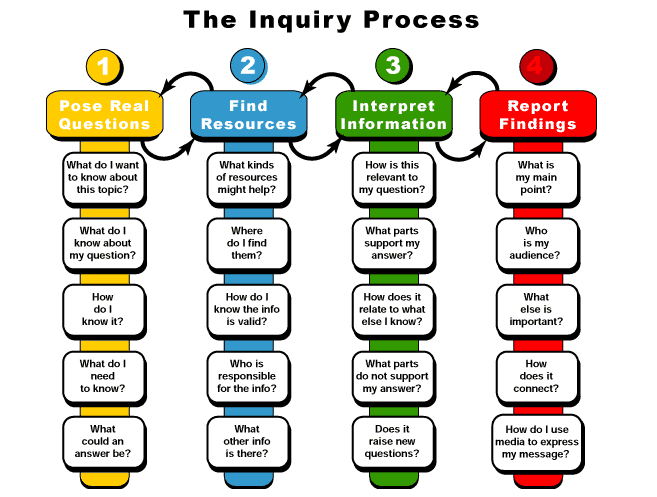Inquiry-based learning is based on scientific method of investigating in a methodical manner.

It is an information-processing model that allows learners discover meaning and relevance of information through a series of steps that lead to a conclusion and reflections on new knowledge.
Teachers use "guided inquiry" methods to facilitate the learning experiences facilitating inquiry around specific goals of instruction.
The benefits of inquiry-based learning include the development of critical thinking, creative thinking, and problem solving.
Principles of Inquiry-based Learning
- Problem statement
a question(s) related to the topic of inquiry to be explored
- Data collection
followed by an investigation and gathering of information related to the question
- Analysis
continuing with a discussion of findings ()
- Conclusion
commencing with a reflection on what was learned
Procedures
The first step in any inquiry is the formulation of a question or set of questions related to the topic of inquiry. The question can be posed by the teacher or by the learners.
Once a question is posed, learners are encouraged to investigate the topic by gathering information from sources that either the teacher provides or within learning resources or tools that are readily available to the pupils.
When enough information related to the topic of inquiry is gathered, it is organized in categories or outlined by highlighting the important information relative to the topic.
This helps the learners to make connections with new learning and prior learning and the information is discussed and analyzed for further understanding. The teacher can direct the discussion and highlight the implications that arise from the investigation and show how it relates to the solution of the problem.
Conclusions are made and related back to the original question. Student reflections are encouraged and serve as a way to relate back to the inquiry and retrace the steps that led to the conclusion. This also serves to reinforce the model so that learners can repeat the process in any problem-solving situation.
 ශිල්ප 64
ශිල්ප 64